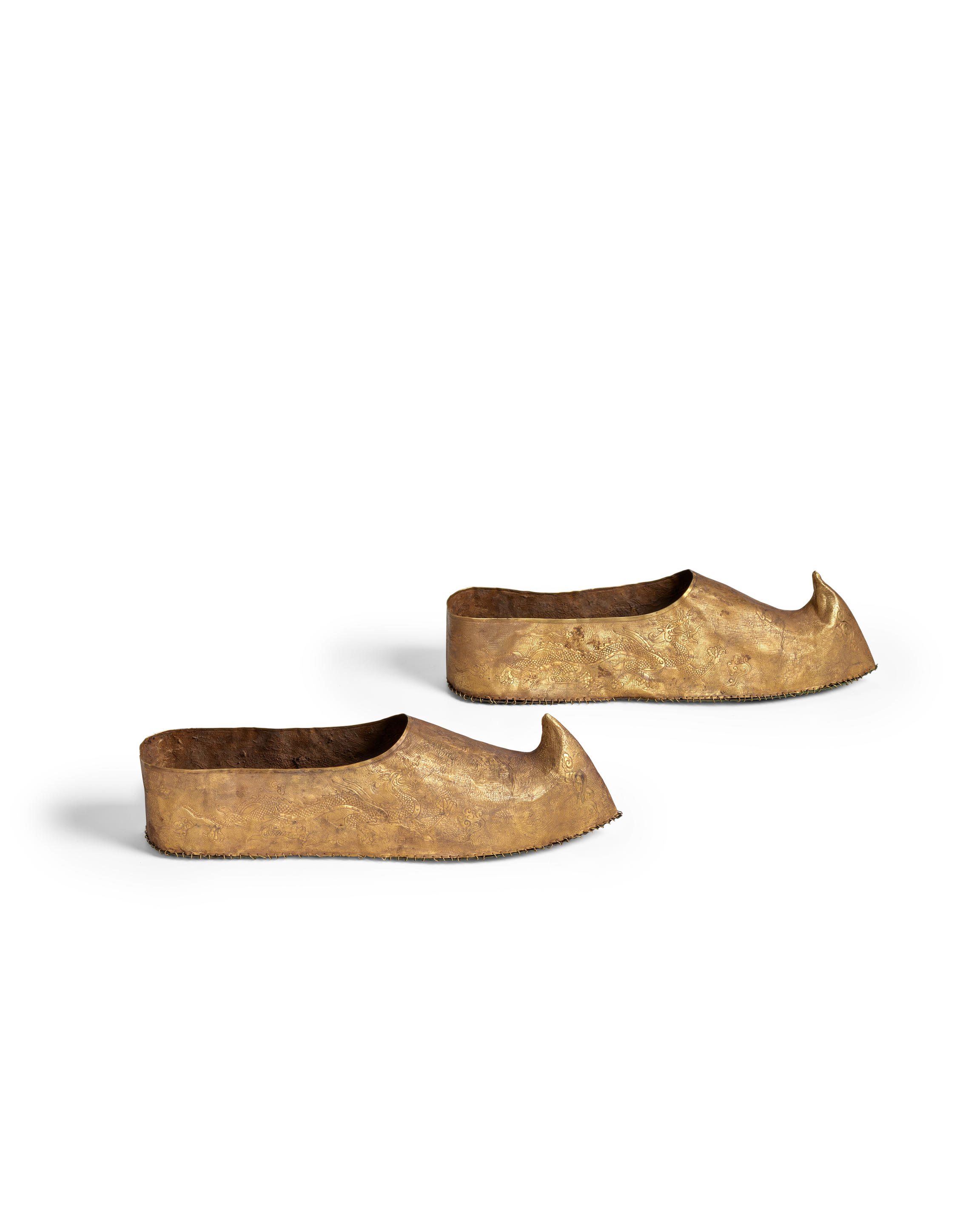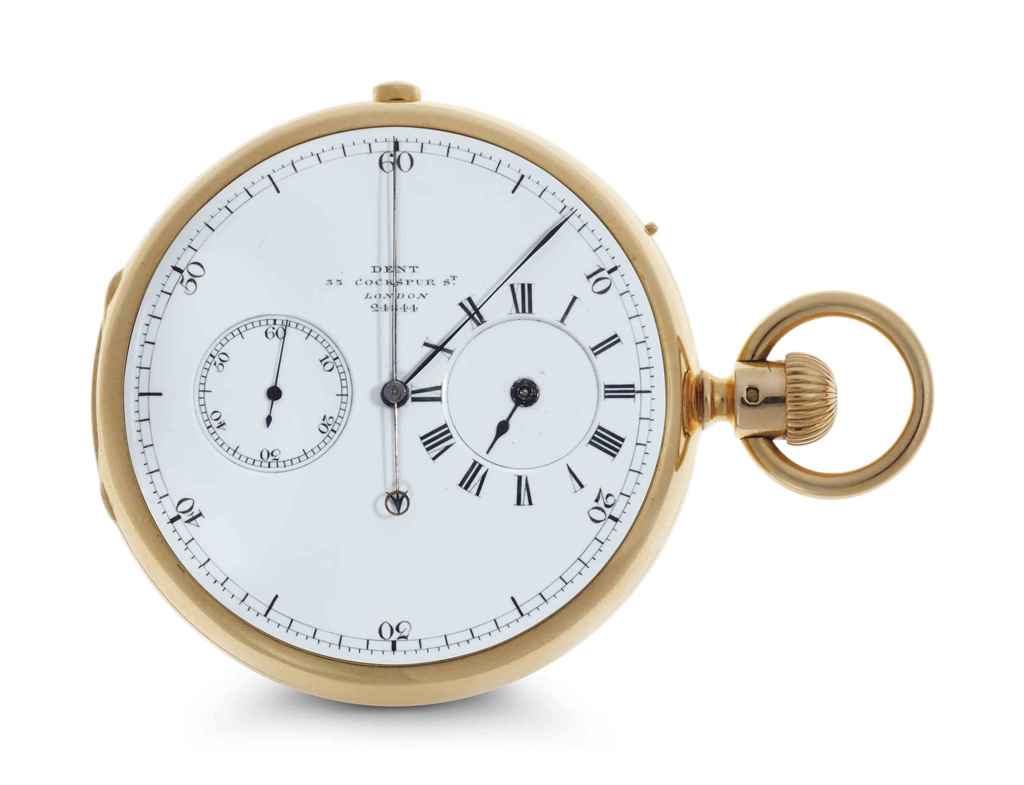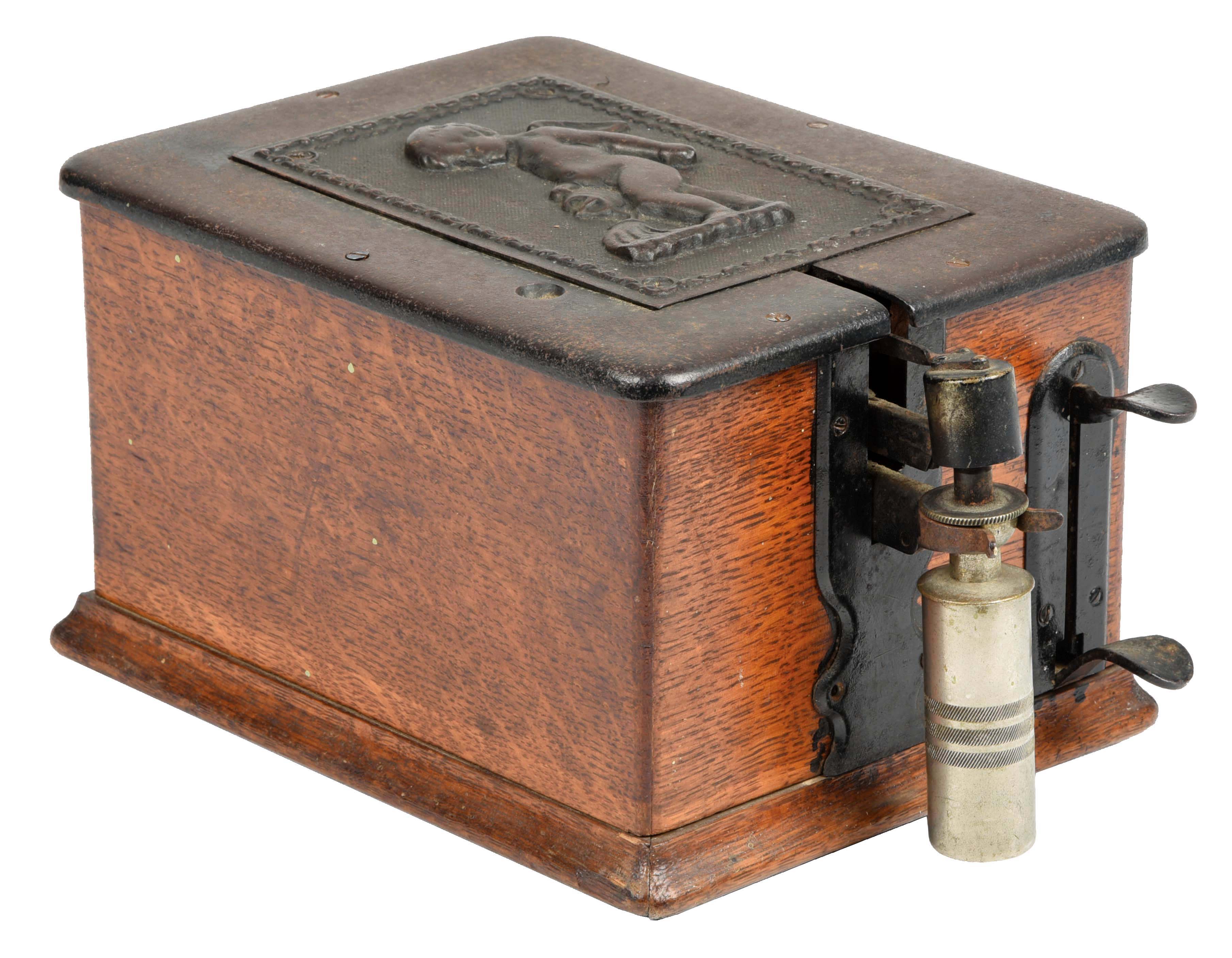A rare and unusual Louis XVI silver gilt skeletonised pocket watch with Sully-type frictional rest escapement Unsigned but probably attributable to Jne Verlinden, Ghent, circa 1780 The gilt movement dial plate applied with standing spring barrel driving the visible centre-wheel and second wheel concealed behind the dial pivoted via a curved cock screwed to the spring barrel, the large diameter horizontal escape wheel pivoted within separate cock and with five-spoke wheel crossings engaging with pallets formed as two discs each cut with angled impulse planes applied directly to the horizontal balance arbor terminating with a sprung three-arm monometallic balance, the circular white enamel Arabic numeral dial with Arabic five minutes beyond the minute ring and blued steel hands, in a silver gilt consular case with convex glasses both to front and rear each bordered with narrow bright-cut scroll bands beneath suspension post with hinged loop (dial probably replaced), the dial plate 35mm (1.375ins) diameter; the case 48mm (1.825ins) diameter. The current lot can be directly compared to an example signed Jne Verlinden a Gand extensively described in by Charles Allix in his article entitled SULLY, VERLINDEN & OTHERS Attempts made on the Continent in the late 18 th and early 19 th Centuries to improve the going of Watches with regard to Position Errors published in ANTIQUARIAN HOROLOGY Vol. XII No.4, Winter 1980 pages 428-434. In his Article Allix explains that Henry Sully (in his 1716 publication Regle Artificielle du Temps and his later work Histoire critique de differentes sortes d echappements ) explored the possibilities of variations in timekeeping occurring through position errors. Through his observation of the operation of a verge escapement Sully discussed how the rate was affected by orientation most notably when the escape wheel arbor was orientated vertically versus horizontally through factors such as pivot endshake and lack balance poise coming into play. In order to partly resolve these issues Sully proposed a design where the position of the verge escape wheel was horizontal both when the watch was suspended (pendant-up) and lying down on its back. Although this refinement addresses orientation issues relating to the escapewheel and its arbor the balance will still be subject to errors as its orientation changes with each of these two positions. The design of the current lot (and the Verlinden watch) is an improvement of Sully s in that it serves to address these issues by ensuring that the balance arbor (rather than that of the escape wheel) remains horizontal whilst the watch is either suspended or lying on its back. This coupled with the clever use of Sully s two-plane two-plane escapement, which allows the balance to be positioned at right-angles to the dial, results in a layout which addresses the most intrusive positive error. The small diameter of the balance also results in a fast beating watch which again helps in removing errors whilst the watch is being moved around. For this to be achieved in a watch with a three-wheel train requires an unusually fine pitch of the teeth for the second and third wheels, hence the wheel-work in the current lot is particularly well executed. In addition to the Verlinden watch Allix identifies another with same layout. This other example dates around 1790 and is signed Lev Blond, Laine however employs a more standard form of escapewheel. Details within the movement such as the five spoke crossings to the escape wheel, shape of the balance cock and barrel feet coupled with the bright-cut border engraving to the case would strongly suggest that the current lot was made in the same workshop as the Verlinden watch. Unfortunately according to Allix nothing is known of Jne Velinden other than a possible association with another maker, P. Velinden, whose name appears on a fine diamond set gold case in the collection of the Belgium Museum. The Velinden watch described by
A rare and unusual Louis XVI silver gilt skeletonised pocket watch with Sully-type frictional rest escapement Unsigned but probably attributable to Jne Verlinden, Ghent, circa 1780 The gilt movement dial plate applied with standing spring barrel driving the visible centre-wheel and second wheel concealed behind the dial pivoted via a curved cock screwed to the spring barrel, the large diameter horizontal escape wheel pivoted within separate cock and with five-spoke wheel crossings engaging with pallets formed as two discs each cut with angled impulse planes applied directly to the horizontal balance arbor terminating with a sprung three-arm monometallic balance, the circular white enamel Arabic numeral dial with Arabic five minutes beyond the minute ring and blued steel hands, in a silver gilt consular case with convex glasses both to front and rear each bordered with narrow bright-cut scroll bands beneath suspension post with hinged loop (dial probably replaced), the dial plate 35mm (1.375ins) diameter; the case 48mm (1.825ins) diameter. The current lot can be directly compared to an example signed Jne Verlinden a Gand extensively described in by Charles Allix in his article entitled SULLY, VERLINDEN & OTHERS Attempts made on the Continent in the late 18 th and early 19 th Centuries to improve the going of Watches with regard to Position Errors published in ANTIQUARIAN HOROLOGY Vol. XII No.4, Winter 1980 pages 428-434. In his Article Allix explains that Henry Sully (in his 1716 publication Regle Artificielle du Temps and his later work Histoire critique de differentes sortes d echappements ) explored the possibilities of variations in timekeeping occurring through position errors. Through his observation of the operation of a verge escapement Sully discussed how the rate was affected by orientation most notably when the escape wheel arbor was orientated vertically versus horizontally through factors such as pivot endshake and lack balance poise coming into play. In order to partly resolve these issues Sully proposed a design where the position of the verge escape wheel was horizontal both when the watch was suspended (pendant-up) and lying down on its back. Although this refinement addresses orientation issues relating to the escapewheel and its arbor the balance will still be subject to errors as its orientation changes with each of these two positions. The design of the current lot (and the Verlinden watch) is an improvement of Sully s in that it serves to address these issues by ensuring that the balance arbor (rather than that of the escape wheel) remains horizontal whilst the watch is either suspended or lying on its back. This coupled with the clever use of Sully s two-plane two-plane escapement, which allows the balance to be positioned at right-angles to the dial, results in a layout which addresses the most intrusive positive error. The small diameter of the balance also results in a fast beating watch which again helps in removing errors whilst the watch is being moved around. For this to be achieved in a watch with a three-wheel train requires an unusually fine pitch of the teeth for the second and third wheels, hence the wheel-work in the current lot is particularly well executed. In addition to the Verlinden watch Allix identifies another with same layout. This other example dates around 1790 and is signed Lev Blond, Laine however employs a more standard form of escapewheel. Details within the movement such as the five spoke crossings to the escape wheel, shape of the balance cock and barrel feet coupled with the bright-cut border engraving to the case would strongly suggest that the current lot was made in the same workshop as the Verlinden watch. Unfortunately according to Allix nothing is known of Jne Velinden other than a possible association with another maker, P. Velinden, whose name appears on a fine diamond set gold case in the collection of the Belgium Museum. The Velinden watch described by















Try LotSearch and its premium features for 7 days - without any costs!
Be notified automatically about new items in upcoming auctions.
Create an alert